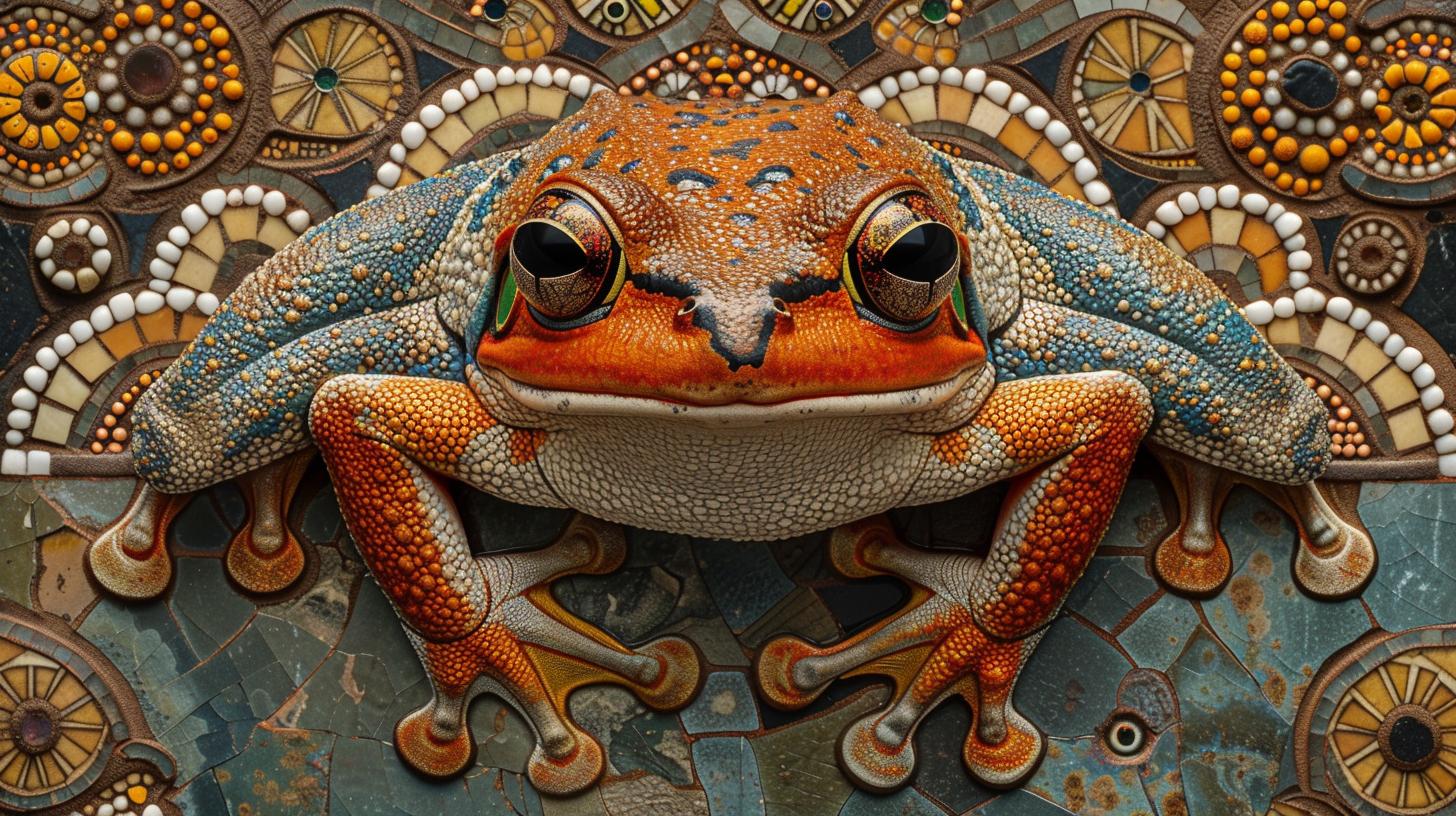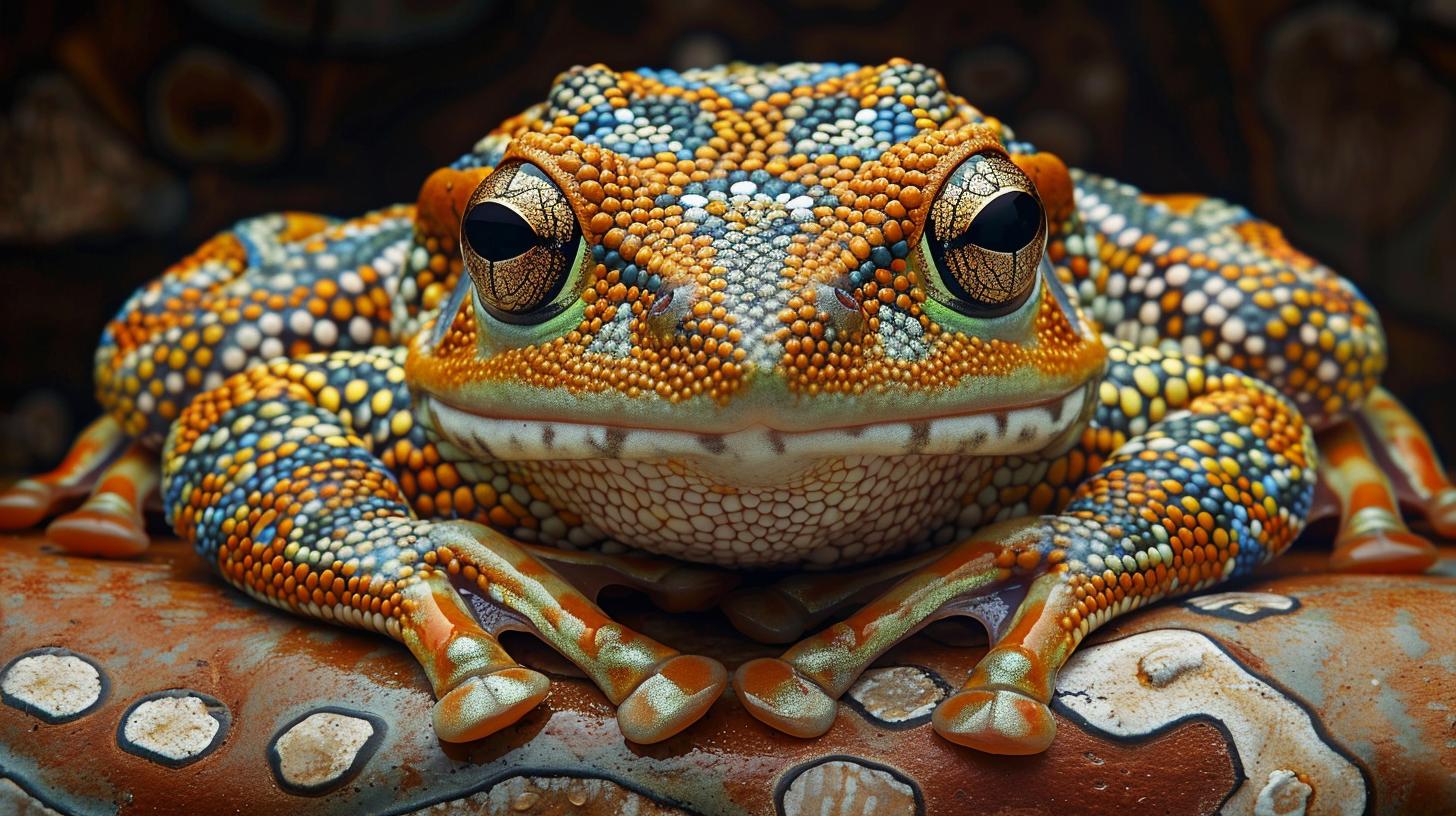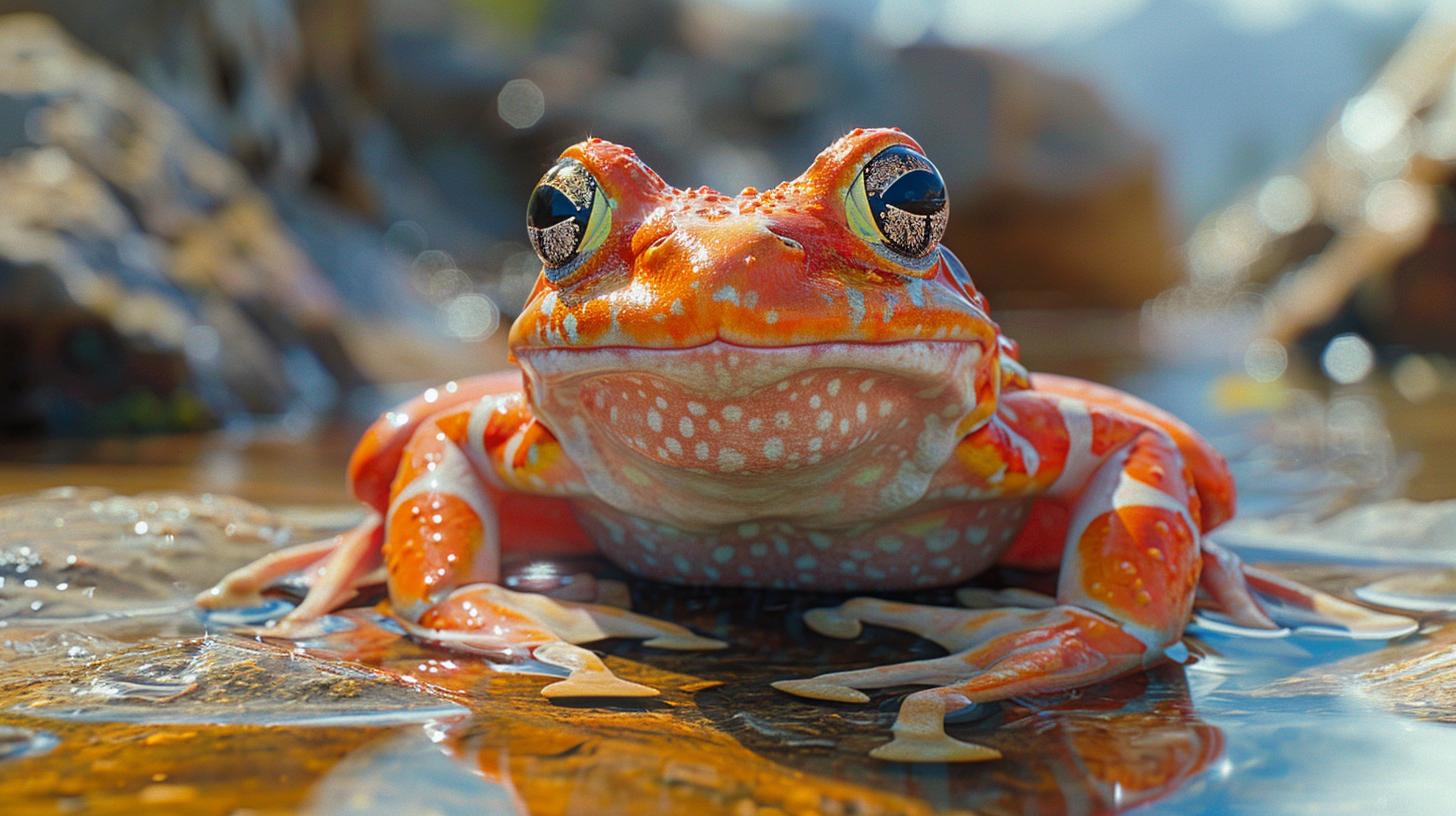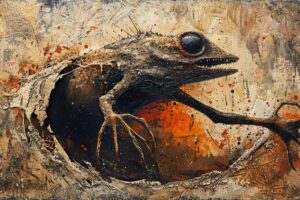The Story Of Tiddalik The Frog: An Australian Indigenous Tale

The Story Of Tiddalik The Frog is an Australian Indigenous tale depicting Tiddalik’s insatiable thirst. Tiddalik drank all the water, leading to widespread devastation. Animals conspired to make Tiddalik laugh, causing him to release the water.
This story has evolved over time, with modern adaptations and a legacy in literature and culture. Tiddalik’s tale emphasizes environmental impact and indigenous connections. The water-holding frog’s unique traits and global influence are also highlighted.
The Origin of the Creation Story
The story of Tiddalik the Frog holds a significant place within Australian Indigenous lore, serving as a timeless tale that reflects the cultural richness and wisdom passed down through generations. This creation story encapsulates the essence of the Dreamtime, embodying the traditions and spiritual beliefs of the Aboriginal people.
The Importance of Indigenous Tales
Indigenous tales play a crucial role in preserving cultural heritage and transmitting ancestral knowledge to younger members of the community. These narratives are not merely entertainment but serve as educational tools, instilling values, lessons, and a deep connection to the land.
The Myth of Tiddalik, the Thirsty Frog
At the core of this myth lies Tiddalik, the amphibian whose unquenchable thirst sets off a chain of events that shape the world. Through Tiddalik’s journey, viewers witness the power of nature, the consequences of unchecked desires, and the importance of harmony within the environment.
Tiddalik’s Unquenchable Thirst
The tale of Tiddalik, the thirsty frog, delves into the consequences of his never-ending thirst, highlighting both his destructive actions and the devastating effects on the environment.
Tiddalik’s Destructive Actions
- Tiddalik’s incessant drinking
- Depletion of water sources
- Impact on surrounding flora and fauna
The Devastating Effects of Tiddalik’s Thirst
- Death of vegetation
- Drying up of lakes, rivers, and swamps
- Struggle for survival among animals
The Plan to Make Tiddalik Laugh
In the midst of the water crisis caused by Tiddalik’s insatiable thirst, the other animals in the land devised a plan to make the frog release the water he had consumed.
This cunning strategy involved humor and wit to save the environment from further devastation.
The Animals Conspire Against Tiddalik
United by the common goal of restoring balance to the ecosystem, the animals came together to confront Tiddalik. Through coordination and collaboration, they worked towards a shared solution to the dire situation at hand.
Nabunum’s Comical Act to Save the Day
Among the animals, Nabunum the eel emerged as the hero with a comedic performance that managed to elicit laughter from the usually somber Tiddalik. By employing clever gestures and entertaining antics, Nabunum successfully triggered Tiddalik’s laughter, leading to the release of the water that was crucial for the survival of all living beings in the region.
Tiddalik’s Laughter and the Return of Water
The moment of Tiddalik’s laughter marked the crucial turning point in the story, as it led to the release of the water that had been consumed. This pivotal moment not only brought relief to the parched land but also initiated the process of replenishing the vital water sources.
The Release of Water by Tiddalik
Tiddalik’s laughter was not merely a sign of amusement but a mechanism for returning the precious water to the environment. As the laughter erupted from the frog, the water flowed out in abundance, cascading back into the dry landscapes, reviving the lakes, swamps, and rivers that had suffered from the prolonged drought.
The Joy of Replenishment
- The glistening streams meandered through the arid earth, bringing life-giving sustenance to the flora and fauna that had withered in the absence of water.
- The once desolate lakes now shimmered under the sunlight, reflecting the sky above and providing a sanctuary for aquatic creatures to thrive.
The Replenishment of Lakes, Swamps, and Rivers
As the water poured forth from Tiddalik, it seeped into the thirsty soil, nurturing the roots of the plants and trees that had long awaited moisture.
The rejuvenation of the waterways created a harmonious balance in the ecosystem, sustaining the interconnected web of life that depended on the life-giving force of water.
A Renewed Cycle of Life
- The once desolate marshes became vibrant hubs of activity, teeming with a newfound vitality that echoed the resilience of nature.
- The rivers flowed with renewed vigor, carving paths through the landscape and symbolizing the enduring power of restoration and regeneration.
The Legacy of Tiddalik
The legacy of Tiddalik extends beyond its traditional origins and continues to resonate in modern times, influencing literature and cultural celebrations.
Tiddalik’s Adaptation in Modern Literature
The story of Tiddalik has inspired numerous adaptations in modern literature, captivating readers of all ages with its timeless themes of environmental stewardship and the importance of community.
Tiddalik’s Commemoration in Warwick, Queensland
Warwick, Queensland, pays tribute to the iconic tale of Tiddalik through a commemorative statue, honoring the significance of the frog’s story within the local community and its enduring impact on Australian folklore.
The Evolution of Tiddalik’s Story
Variations in Tiddalik’s Tale Over Time
Throughout history, the tale of Tiddalik has undergone various transformations, adapting to different cultures and contexts. The evolution of this story reflects the changing values and beliefs of societies over the years.
Different Animal Characters in Different Versions
In different retellings of Tiddalik’s story, the animals involved in making Tiddalik laugh have varied. These alterations introduce new perspectives and themes, adding depth to the narrative and engaging audiences in diverse ways.
The Environmental Impact of Tiddalik’s Story
Exploring the consequences of Tiddalik’s actions and the environmental messages embedded in the tale.
The Outcome of the Original Ending
In the original version of the tale, the environmental impact of Tiddalik’s thirst led to a catastrophic flood, causing loss of life and displacement.
The Environmental Message in Tiddalik’s Tale
The story of Tiddalik serves as a cautionary reminder of the importance of water conservation and sustainable resource management. It highlights the interconnectedness of all living beings and the delicate balance of ecosystems.
Tiddalik’s Connection to Indigenous People
Tiddalik’s presence in Australian Indigenous culture is deeply rooted, with strong ties to the Gunaikurnai people of southern Gippsland, Victoria. The significance of Tiddalik within Aboriginal culture goes beyond just a story of a thirsty frog.
The Attribution to Gunaikurnai People
The Gunaikurnai people have long held the story of Tiddalik as part of their oral tradition, passing it down through generations as a reflection of their connection to the land and the importance of water.
Tiddalik’s tale serves as a reminder of the balance between nature and humanity.
Tiddalik’s Representation in Aboriginal Culture
Within Aboriginal culture, Tiddalik represents not just a clever animal, but the intertwining of storytelling, nature, and spirituality. The story of Tiddalik is a testament to the wisdom and resourcefulness of Indigenous peoples, showcasing their respect for the environment and the lessons it holds.
The Natural History of Tiddalik
The Natural History of Tiddalik encompasses the distinctive traits of the Water-Holding Frog and its remarkable adaptation to survive during dry seasons. Below, we delve into the unique characteristics and survival strategies of this fascinating amphibian.
The Traits of the Water-Holding Frog
- The Water-Holding Frog, known as Tiddalik in Indigenous Australian mythology, belongs to the species Ranoidea platycephala.
- One of its remarkable features is the ability to burrow underground during dry periods, emerging during rainfall to absorb significant amounts of water.
- This unique behavior allows the Water-Holding Frog to remain hydrated and reproduce even in arid conditions, distinguishing it from other frog species.
- With its efficient water storage capabilities, the Water-Holding Frog plays a crucial role in the ecosystem, particularly during times of drought.
The Adaptation to Dry Seasons
- During extended periods of drought, the Water-Holding Frog demonstrates its capacity to withstand water scarcity by conserving moisture within its body.
- By retreating underground and entering a state of dormancy, the frog minimizes water loss and remains resilient throughout harsh environmental conditions.
- When rainfall eventually arrives, the Water-Holding Frog emerges to absorb water, replenishing its reserves and ensuring its survival in challenging environments.
- This adaptive behavior allows the frog to thrive in arid habitats, highlighting its evolutionary specialization to thrive in variable climates.
Tiddalik’s Influence Beyond Australia
The Global Spread of Tiddalik’s Story
The captivating tale of Tiddalik the Frog has transcended its origins in Australia and traveled across continents, captivating audiences worldwide.
This story serves as a cultural bridge, inviting people from diverse backgrounds to appreciate the rich heritage of Indigenous Australian storytelling.
Cultural Significance of Tiddalik Worldwide
The story of Tiddalik has not only entertained audiences globally but has also served as a cultural touchstone, showcasing the resilience of Indigenous traditions and the universal themes of nature, humor, and redemption.
Tiddalik’s legacy continues to inspire new generations and foster a deeper appreciation for the interconnectedness of all living beings.
.





















